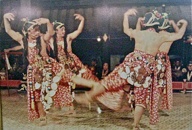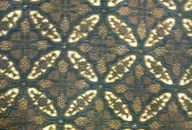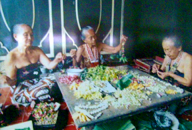Batik Museum
THE KERATON, the sultan’s palace
Yogyakarta, central java, indonesia
April 11, 2009


Batik Museum
THE KERATON, the sultan’s palace
Yogyakarta, central java, indonesia
April 11, 2009




Yards and yards of explanation could be written about the traditional batik cloth of Indonesia. Worn by royalty, nobility, priests, palace guards, and villagers, batik is considered to be the great leveler in Indonesian society. The Javanese royal courts have aided this craft toward becoming an art form of national pride. The cloth can be seen worn as shirts, dresses, sarongs, scarves, and headdresses. It’s use in the home is found in tableware, pillows, and upholstery. The word batik is derived from the last syllable, “tik” meaning dot. This referred to the resist dye method; the word now describing both the process and the fabric itself. Each area of Java has its own unique style, which communicates both ethnic identity and social status. Special motifs with symbolic meaning, were once reserved for royal courts of Java. Today, these motifs are worn by all Indonesians on auspicious occasions such as weddings, black tie events, circumcisions, childbirth celebrations, and burials. The Batik Museum, located in the Keraton or Sultan’s Palace, displays many special designs, each accompanied by a photograph of the artist who created the design. All the batik fabric displayed in the museum has been created by the most labor-intensive method, batik tulis, meaning “to write”. The hot wax is passed through a special writing tool, where the steady hand of the artist applies it directly to the cloth, held on an upright frame. Two other, more common methods of creating batik include block printing, using a metal stamp called a cap; or cetak; and, a mass-produced screen printing method which imitates traditional batik designs.
PHOTOS: Left Column: 1. & 2. Batik designs from the royal court. 3. A diorama describing the tulis method of batik design. 4. A photograph depicting the batik fabric costumes of court dancers. Center, Top: The sultan and queen, wearing batik sarongs, standing before their residence at the Keraton. Center, Bottom: A palace guard in the Batik Museum. He wears a uniform which includes a hat and sarong made of the same design in batik printed cloth. Right Column: 1, 2, & 3. Royal court designs in tulis method batik cloth. 4. Photograph from the archives of the Batik Museum in the Sultan’s Palace: These elderly women, each wrapped in batik cloth, are making decorations of flowers for an important occasion.


FABRIC OF INDONESIA






